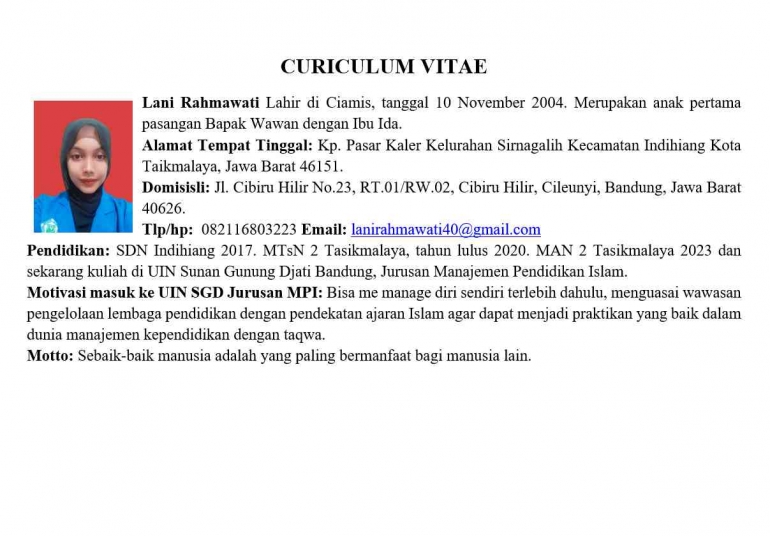By Lani Rahmawati (1232010119) 5th Semester Student / Department of Islamic Education Management, Faculty of Tarbiyah and Teacher Training, Bachelor's Degree Program, Sunan Gunung Djati State Islamic University, Bandung.
Global phenomena show an increase in data complexity due to the digital revolution and inequality in access to education, which requires more in-depth and measurable scientific analysis skills. However, many students still do not understand the fundamental differences between quantitative and qualitative research, especially in the application of data collection, processing, and analysis techniques. This gap creates obstacles in producing valid, reliable, and evidence-based research. Therefore, this discussion aims to provide a comprehensive understanding of research methodologies and techniques so that students are able to design, analyze, and interpret data systematically and accurately.
First: Data and variables are key components in research that form the basis for analyzing a phenomenon. Data is divided into quantitative data in the form of numbers and qualitative data in the form of descriptions that illustrate deeper meaning. Variables consist of independent, dependent, moderating, and mediating variables that explain cause-and-effect relationships. Measurement scales include nominal, ordinal, interval, and ratio scales that determine statistical analysis techniques. Validity indicates the accuracy of instruments in measuring concepts, while reliability ensures the consistency of results. Understanding data, variables, measurement scales, validity, and reliability is important for research to produce accurate, valid, and scientifically applicable findings.
Second: In research, the population, sample, and data collection instruments play an important role in ensuring the accuracy of the results. The population includes all subjects targeted by the research, while the sample is a portion selected to represent the population through techniques such as random or purposive sampling. Instruments such as questionnaires, observations, interviews, tests, and documents are used to obtain data systematically. Instrument testing and content validity are carried out to ensure that the measuring instruments are accurate and reliable. With careful sample selection and valid instruments, research can produce representative data for decision-making in educational management.
Third: Quantitative and qualitative data collection techniques play an important role in determining the validity of research results. The quantitative approach uses questionnaires, tests, and documentation to produce numerical data that can be analyzed statistically. Meanwhile, the qualitative approach relies on in-depth interviews, participatory observation, and document analysis to understand phenomena contextually and in depth. To maintain accuracy, researchers need to apply triangulation, instrument testing, enumerator training, and systematic documentation. In addition, the application of ethics such as respondent consent, data confidentiality, and transparency of objectives is very important so that the data obtained is valid, reliable, and scientifically sound.
Fourth: Data analysis in research plays an important role in interpreting the relationships and influences between variables. Correlation analysis is used to determine the strength and direction of the relationship between variables, while regression analysis measures the extent to which independent variables influence dependent variables. Pearson's correlation is used for linear continuous data, while Spearman's and Kendall's correlations are used for ordinal or non-normal data. Meanwhile, simple and multiple linear regression help to understand the influence of one or more factors on research results. The results are presented through tables, graphs, and narratives so that the findings are easy to understand, relevant, and form the basis for data-driven decision making in education management.
Overall, training in quantitative and qualitative research methodology and techniques provides students with important tools for producing high-quality research. The research process, which includes data management, variable determination, sample selection, instrument use, and data analysis, must be carried out using systematic and measurable scientific principles. The application of validity, reliability, and research ethics are the main foundations for ensuring that the results obtained are reliable. Through a deep understanding of correlation, regression, and data interpretation techniques, research is expected to make a real contribution to improving the quality of education based on scientific evidence and objective analysis.
This article is a review of Part 6 (Quantitative and Qualitative Research Methodology and Techniques) from the teaching materials for the Management Research Methods course, taught by Prof. Dr. H. A Rusdiana, M.M. (https://digilib.uinsgd.ac.id/id/eprint/121673)

Follow Instagram @kompasianacom juga Tiktok @kompasiana biar nggak ketinggalan event seru komunitas dan tips dapat cuan dari Kompasiana. Baca juga cerita inspiratif langsung dari smartphone kamu dengan bergabung di WhatsApp Channel Kompasiana di SINI








